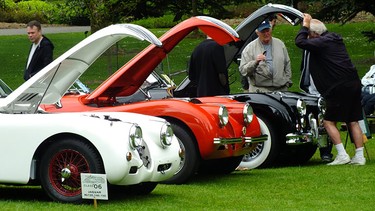That is the question and age-old debate when it comes to classic and vintage vehicles

Article content
The title represents an age-old debate among gear-heads and shade-tree mechanics alike. Some, wishing to keep as much on their classics as close to original as possible, shun the notion of installing a remanufactured part such as an alternator or starter. And a portion of this rebuild group also quietly (or not so quietly) relishes the feeling of self-sufficiency that comes with being able to repair something rather than replace it. The replacement side of the argument usually stands by their choices due to easier jobs with factory spec rebuild quality rather than home garage bench-work. And even for those with a seemingly bounty of spare time, the choice to swap out a unit pays off in time for more enjoyable diversions. But what’s more enjoyable than tinkering?
Advertisement 2
Article content
With certain components, rebuilding gives you the option of improving on factory performance. For example, alternators and generators are always power-rated to simply meet the electrical needs of the vehicles they’re installed in and nothing more. After a few years of adding on power-hungry sound systems, or maybe a better lighting system, these built-to-minimum units show their weakness. Most of these power-dynamos can easily accept better windings and internals to boost the amperage output, leaving the same exterior looks, but with much better performance.
Article content
Engines easily fall into the same category. You can buy a reman or new or tear down the existing unit for a machine shop overhaul and slip in a few improvements along the way such as better intake, exhaust, porting, remote oiling, etc.
Advertisement 3
Article content
-

Collector Classics: Why it costs so much to restore or modify a classic
-

What oil should you use in your older or classic car?
When it comes to bench overhauling common items such as brake calipers, it’s critical to ensure that piston bores are within limits and free of pitting. You can’t get oversized piston kits to make up for excessive wear. That means knowing the specs and being able to measure them.
Some things are just not candidates for rebuilding. Steering boxes and rack and pinion assemblies are great examples. Yes for most popular rides you can easily find affordable seal kits but they seldom if ever work due to the fact that when these gears leak it’s usually related to worn surface areas and not seal failures. The metal feed lines on rack and pinion assemblies can be replaced but not with aftermarket or original equipment parts; they’re rarely offered. Instead simply remove the lines as intact as possible and take them to a hydraulic line shop to get duplicates made at a fraction of the cost of a complete rack assembly.
Rebuilding older carburetors is a worthwhile exercise but not just for saving money. Once you’ve mastered rebuilding these fuel units you’ll have a much easier time making adjustments and cleaning them down the road because of the knowledge you’ve gained from rebuilding them from the ground up.
